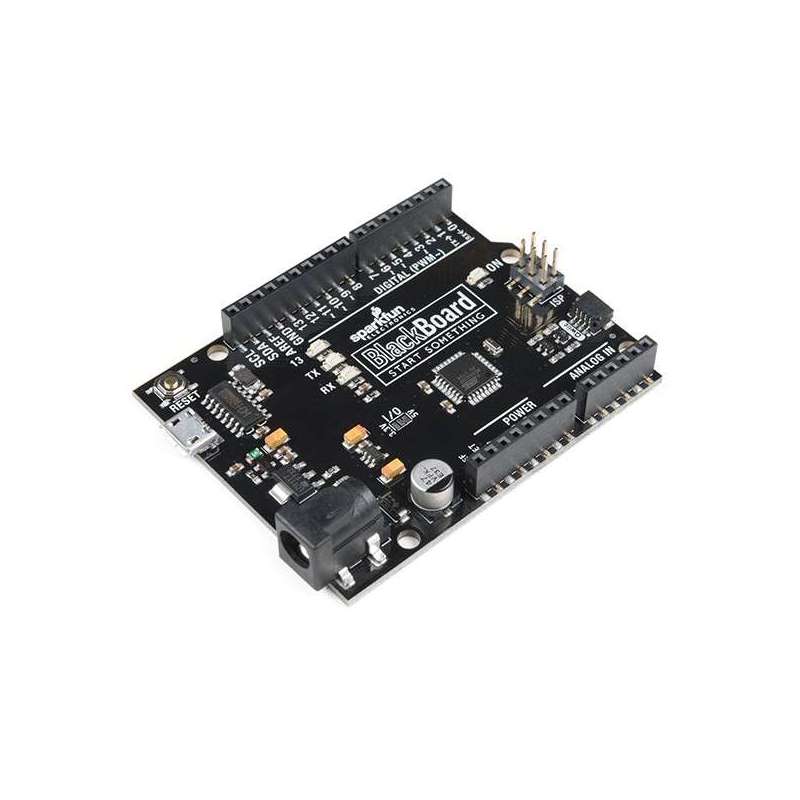



RLX COMPONENTS s.r.o. , Electronic Components Distributor.
RLX COMPONENTS s.r.o. , Electronic Components Distributor.
SparkFun BlackBoard (SF-SPX-14669) Arduino Uno with many extra I/O, PWM,Analog Inputs, UART, SPI, ISP header
The BlackBoard from SparkFun is everything you need in an Arduino Uno with many extra perks. BlackBoard has all of the hardware peripherals you know and love: 14 Digital I/O pins with 6 PWM pins, 4 Analog Inputs, UART, and SPI with a handful of external interrupt pins. BlackBoard even has an SMD ISP header to connect SPI pins to shields.
We’ve applied every lesson we’ve learned about making a better Uno and created the BlackBoard. The USB to serial is now done with the ubiquitous CH340G requiring fewer driver installs and a rock solid microB connector with through hole anchoring. The power portion of the BlackBoard has been reworked: we upgraded the 3.3V regulator to provide up to 600mA, with full thermal and reverse circuit protection, and added extra decoupling capacitance to increase the sensitivity of the ADC readings. We’ve decreased the brightness of the power LED, pin 13 LED, and the TX/RX LEDs from blinding to just perfect. We’ve added 3.3V voltage translation and a Qwiic connector to the edge of the board to allow for quick and seamless connection to our ever-growing line of I2C based Qwiicproducts.
And for more advanced users we’ve added an I/O jumper. Cut the trace to 5V and solder a jumper to the 3.3V side and the board will run at 3.3V. This is extremely handy if you have a shield or 3.3V sensitive devices, such as an SPI interface, that needs protecting.
The SparkFun BlackBoard comes fully tested with the Optiboot bootloader and can be easily programmed with the ‘Arduino/Genuino Uno’ option from within Arduino. You can power the BlackBoard over USB or through the barrel jack. The on-board power regulator can handle anything from 7 to 15VDC. Check out the related items below for a compatible wall-wart power supply.
Not sure which Arduino or Arduino-compatible board is right for you? Check out our Arduino Buying Guide!